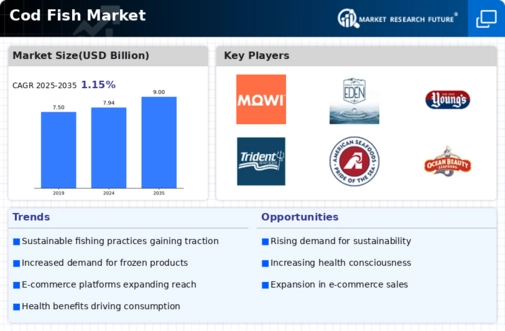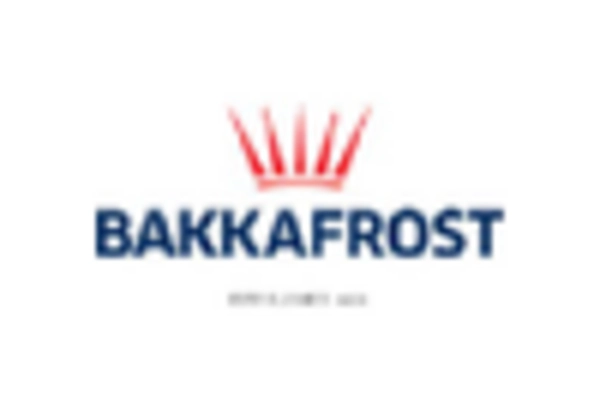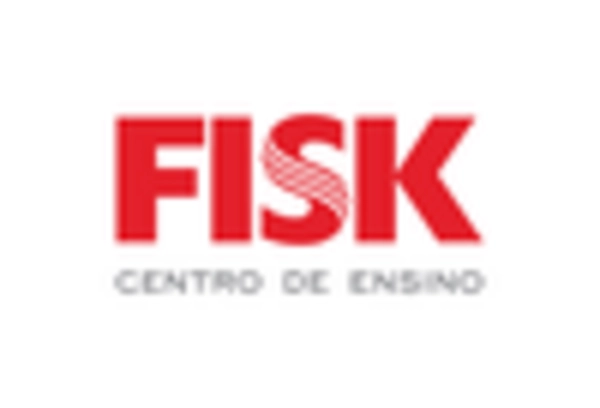E-commerce Growth
The rise of e-commerce is transforming the Cod Fish Market, providing new avenues for distribution and consumer engagement. Online platforms are increasingly being utilized to sell fresh and frozen cod directly to consumers, bypassing traditional retail channels. This shift is expected to contribute to a 20 percent increase in online sales of cod products by the end of 2025. E-commerce not only offers convenience for consumers but also allows for better price transparency and access to a wider variety of products. As more consumers turn to online shopping for their seafood needs, businesses in the Cod Fish Market must adapt their strategies to capitalize on this trend.
Sustainability Initiatives
The Cod Fish Market is increasingly influenced by sustainability initiatives aimed at preserving marine ecosystems. As consumers become more environmentally conscious, demand for sustainably sourced cod is rising. This shift is reflected in the growing number of certifications for sustainable fishing practices, which are now seen as essential for market access. In 2025, approximately 30 percent of cod sold is expected to be certified sustainable, indicating a significant trend towards responsible sourcing. Companies that adopt sustainable practices may not only enhance their brand image but also tap into a lucrative segment of eco-conscious consumers. This focus on sustainability is likely to drive innovation in fishing methods and supply chain management, ultimately shaping the future of the Cod Fish Market.
Changing Consumer Preferences
Changing consumer preferences are significantly impacting the Cod Fish Market. There is a noticeable shift towards convenience and ready-to-cook products, as busy lifestyles drive demand for quick meal solutions. In 2025, it is projected that sales of pre-packaged cod products will increase by 10 percent, reflecting this trend. Additionally, younger consumers are showing a preference for diverse culinary experiences, leading to an increased interest in international cod dishes. This evolving landscape suggests that companies within the Cod Fish Market must innovate and diversify their product offerings to meet the changing tastes and preferences of consumers.
Health and Nutrition Awareness
The Cod Fish Market is experiencing a surge in demand driven by increasing health and nutrition awareness among consumers. Cod is recognized for its high protein content and low fat levels, making it an attractive option for health-conscious individuals. In 2025, the market for cod is projected to grow by 5 percent annually, as more consumers seek out nutritious food options. This trend is further supported by dietary guidelines that emphasize the importance of seafood in a balanced diet. As awareness of the health benefits of cod continues to spread, it is likely that the Cod Fish Market will see a corresponding increase in product offerings, including ready-to-eat meals and health-focused recipes.
Technological Advancements in Fishing
Technological advancements are playing a pivotal role in shaping the Cod Fish Market. Innovations such as advanced sonar technology and automated fishing vessels are enhancing the efficiency and sustainability of cod fishing operations. These technologies not only improve catch rates but also reduce bycatch, aligning with the industry's sustainability goals. In 2025, it is anticipated that the adoption of such technologies will increase by 15 percent, leading to more efficient supply chains and reduced operational costs. As companies invest in these advancements, they may gain a competitive edge in the Cod Fish Market, positioning themselves as leaders in both productivity and environmental stewardship.


















Leave a Comment